In the Nilgiris, local NGOs roped in to vaccinate tribal communities at their doorstep
By involving tribal leaders, social messaging in local dialects and sharing resources and infrastructure with NGOs, the Nilgiris district administration plans to vaccinate its entire tribal population by the end of this month.

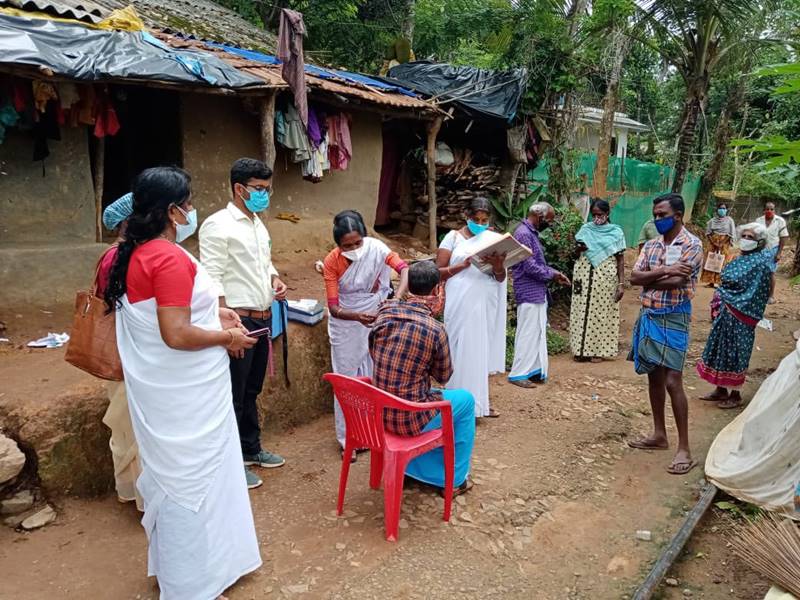
Vaccination of tribal people in Gudalur, Nilgiris. Photo: @supriyasahuias/twitter
Coimbatore, Tamil Nadu
The Nilgiris in the Western Ghats, Tamil Nadu, has about 450-500 tribal settlements scattered across its ancient hills and forests, inhabited by the Toda, Kotha, Irula, Kurumba, Paniya and the Kattunayakan tribal communities.
Spread over 2,565 square kilometres, it is one of the Tamil Nadu’s 38 districts, with a population of 800,000 people of which about 27,700 are from tribal communities. The Nilgiris is a biodiversity hotspot too.
While they were relatively unscathed in the first wave of the pandemic, the second wave has not spared the adivasi communities as the coronavirus has reached the remotest areas of rural India. But, despite several outreach programmes and vaccination camps initiated by the government, the response from the tribal population was lukewarm to say the least.
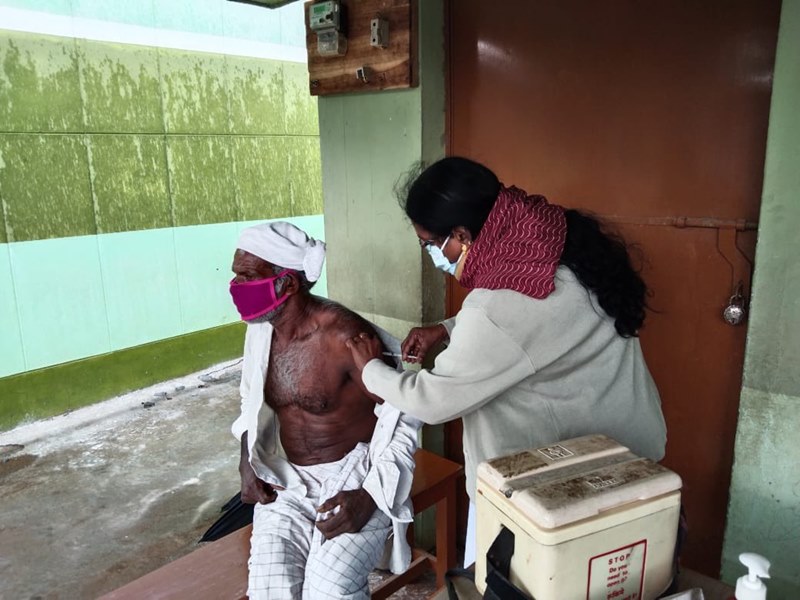
To address this challenge and reach the COVID vaccines to tribal people living in far flung hamlets of the districts, the Niligiris district administration has roped in local nonprofits to raise awareness and vaccinate tribal communities at their doorsteps.
The move is bearing fruit. Of the total 27,700 members of tribal communities in the district, 4,000 have received their first vaccination, J Innocent Divya, collector, Nilgiris district, told Gaon Connection.
“The plan of the government and the district administration is to acquire enough vaccines to inoculate the entire population of the Nilgiris and possibly become the first district in the country to have a resident population that is completely vaccinated,” informed the district administration’s press statement on June 9.
According to Divya, initially, there was a lot of hesitation in getting vaccinated amongst the tribal communities. “Like it was in rural hinterlands across the country, fake social media posts, whatsapp forwards and rumours, fuelled fears and there was considerable reluctance,” she said.
But by roping in local non-profits working with tribal communities, the district administration is vaccinating tribal people in their hamlets.
Also Read: Uttarakhand faces an uphill task as it tries to reach vaccines to its far flung villages
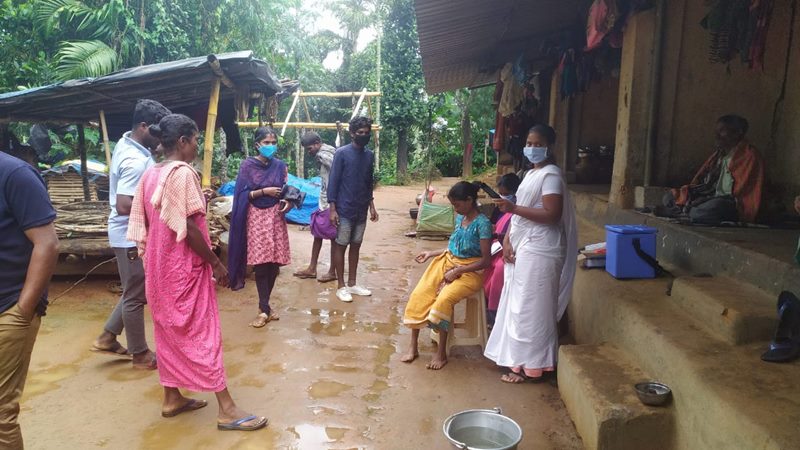
A public-private initiative
“We co opted the help of several NGOs that have been doing stellar work at the field level tribal areas of the district,” said Divya. The collector was particularly appreciative of the non-profits such as the Nilgiri Adivasi Welfare Association, Nilgiris Wayanad Tribal Welfare Society, Action for Community Organisation, Rehabilitation and Development, and Astitva that shared their resources and infrastructure to facilitate the vaccination drive.
“When teams from PHCs and health workers from the government did not meet with much success in the tribal communities, the collector co-opted the help of NGOs in the district that worked on the field for better reach and result,” M Alwas, secretary/CEO of the non-profit Nilgiris Adivasi Welfare Association (NAWA) told Gaon Connection.
NAWA has been working with the Nilgiri tribal communities since 1958. And, its mobile medical outreach programme launched in 2009 is supported by the Tamil Nadu Government National Health Mission.
Also Read: Devolving more powers to elected panchayat representatives can help combat the pandemic effectively
But it wasn’t an easy journey. A lot of effort went into the vaccination awareness and drive. The tribal communities are largely suspicious of hospitals, and do not visit primary health centres (PHCs) either, if they can help it. Persuading them to take a jab had to be a well orchestrated and planned process.
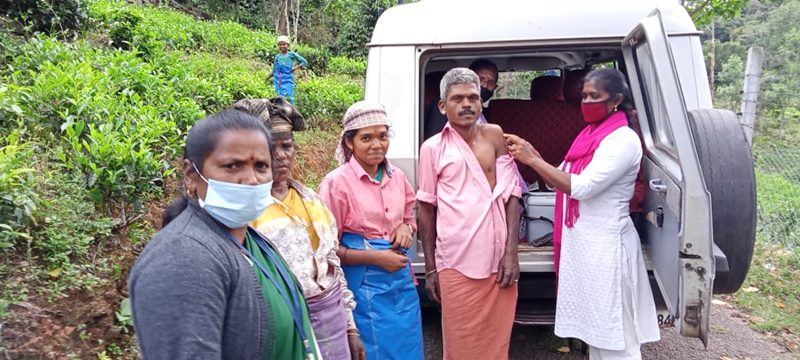
Social messaging in the local language
“We first called a meeting of all the village leaders. We spoke to them and followed that up with a vaccination camp exclusively for them,” said Divya. “I recorded a message for the village people telling them that the vaccination was our only protection against the virus,” she added.
The administration then recorded messages from the village leaders who spoke about the efficacy of the vaccine in their own language and conveyed that to the various tribal hamlets in the district. The people were more forthcoming when they saw their leaders were fine after the vaccine and heard them dispelling myths about the vaccine.
Also Read: A tale of two Anaikattis
“NAWA has had the trust of the tribal communities for years now. We have worked on several projects centred around health and nutrition and education in the tribal villages. For the vaccination drives, a medical officer, a staff nurse, a lab technician and a village health nurse, accompanied by one of our members, visited the villages,” Alwas said.
The district administration is full of praise for the non-profits’ work. “With their reach and influence over the tribal communities, the contribution of local NGOs is invaluable,” said Divya.
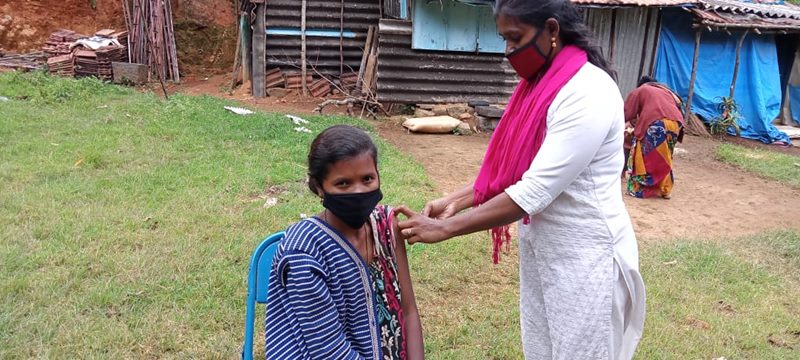
Delivering vaccination to their doorstep
The Nilgiris tribal communities were unaffected in the first wave of the COVID-19 pandemic. “But there was no getting away from the second wave, and many tribal habitations were affected,” K Vijay Kumar, director, education, NAWA, told Gaon Connection.
Also Read: Every second COVID case and death reported in May 2021 was from rural India
“Choladi village in Gudalur Block reported about forty three people who got COVID-19 in May last and the numbers slowly began to increase and spread to nearby areas,” said Vijay Kumar. While there were just one or two deaths reported from the tribal communities, it was still a cause of concern.
The district administration realised the best way to vaccinate tribal communities was to bring vaccines to their doorsteps. “They are comfortable on their own turf and are more willing. With their village leaders having led the way, they are no longer hesitant,” said Divya.
For the past few weeks, vaccination drives are being carried out at the doorstep of the tribal communities in the district.
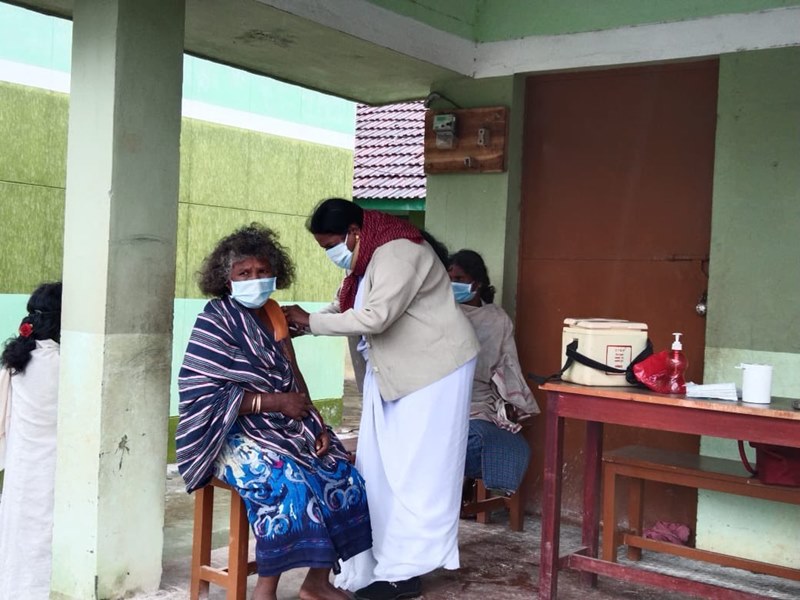
Need regular supply of vaccines
According to the district collector, vaccination of tribal people is picking pace but all that is slowing down the process is the availability of the vaccine.
Also Read: 50% drop in COVID19 vaccination in India in the past month, shows govt’s Co-WIN data
On June 6, Ma Subramanian, minister for Health and Family Welfare, Tamil Nadu, visited the Nilgiris where he had declared that by end June all tribal inhabitants of the district who were eligible, would be vaccinated. He had also said that Tamil Nadu will receive 42 lakh doses of vaccine before the end of June.
“I appraised him of the situation and the importance of safeguarding the well being of the Particularly Vulnerable Tribal Groups in the district whose numbers were declining,” Divya told Gaon Connection. “He assured us that the vaccines would be made available to us,” she added.
In Tamil Nadu, so far (June 14, 2021), 10,842,928 doses of vaccination have been administered, according to data from the Union health ministry.
If all goes as planned then by the end of this month, the Nilgiris will possibly become the first district in the country to have a resident population that is completely vaccinated, including its tribal communities.

